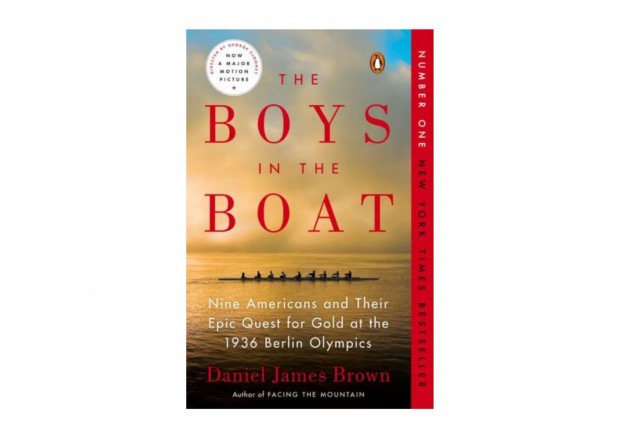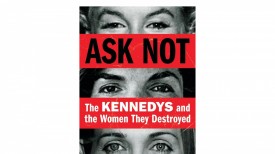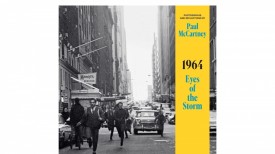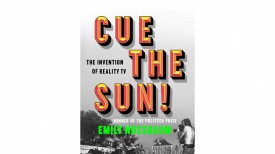'The Boys in the Boat' Review: A Film Adaptation Worth Considering After Reading the Book

Explore the compelling narrative of 'The Boys in the Boat' through George Clooney's visually impressive film adaptation. While the movie skillfully captures Daniel James Brown's story, it is recommended that you delve into the original book for a more profound understanding of the characters' struggles, dreams, and triumphs.(Photo : Barnes & Noble)
George Clooney's film adaptation of 'The Boys in the Boat' visually captures Daniel James Brown's compelling story. However, while the movie is an excellent adaptation, exploring the narrative in the original book is recommended before delving into the cinematic portrayal.
Overview
The book focuses on Joe Rantz, a young man dealing with personal challenges, as he joins the University of Washington's rowing team. The detailed storytelling and descriptions immerse readers in the difficult times of the Great Depression, highlighting the characters' impressive accomplishments. Joe's positive attitude and strong work ethic shine through despite being abandoned by his family.
The film skillfully depicts the University of Washington's rowing team's dedication and teamwork during the 1936 Berlin Olympics. The cinematography captures the sport's intensity and the historical backdrop of the Great Depression, offering viewers a visually impressive experience.
Clooney and screenwriter Mark L. Smith deliver a conventional yet sincere and compelling narrative, emphasizing the team's hurdles and their improbable victory. Coach Ulbrickson's bold decision to bring the less experienced junior varsity team to Olympic qualifiers adds a dramatic element. The team faces formidable opponents, including Ivy League athletes. It ultimately competes in the Berlin Olympics, challenging Hitler's vision of German superiority.
READ ALSO: Iowa State Attorney Daniel Johnston Criticizes Overly Broad Book Bans in Schools Under SF 496
Movie-to-Book Differences
While the movie is visually appealing, some aspects of the story may be better understood by reading Brown's book. The written narrative explores the characters' personal struggles, dreams, and triumphs, establishing a deep connection between readers and the young athletes.
The movie condenses the intricate details of the book to fit into a limited timeframe. While it successfully conveys the essence of the story, the richness of character development and historical context in the book might be more thoroughly enjoyed by those who have immersed themselves in Brown's written narrative.
While the film successfully portrays the photogenic sport of rowing and delivers occasional excitement in the races, it falls short of capturing the depth of the story. The book delves into the responsibilities of each boat member. However, the movie focuses mainly on Joe, neglecting the other rowers. Additionally, the film omits many setbacks that make the story unlikely and inspiring, presenting a series of triumphs that diminish the crew's hard work and challenges. Clooney's many-years-later framing device also adds a distracting element to the narrative.
Overall Review
For those unfamiliar with the book, the film introduces the inspiring story of resilience and camaraderie. However, for a more comprehensive and immersive experience, reading 'The Boys in the Boat' beforehand is recommended. The book provides a deeper understanding of the characters and their journey, enhancing the overall appreciation of the narrative.
In conclusion, the visual adaptation of 'The Boys in the Boat' is commendable for its excellent portrayal of a remarkable story. Whether one chooses to watch the film first or after reading the book, both mediums offer unique perspectives on this tale of determination and triumph during a challenging period in history.
RELATED ARTICLE: Eileen's Book-to-Movie Differences: Director William Oldroyd Explains the Changes in Plot
© 2023 Books & Review All rights reserved.
Popular Now
1
Books to Read After 'Fourth Wing': Top Picks for Fantasy and Romantasy Fans

2
‘The Secret Public’ by Jon Savage Book Review: An Insightful Look Into the LGBTQ Influence

3
Stephanie Regalado's 'If They Only Knew' Column Is Now A Book, Unleashing 60 Anonymous True Stories to Empower Women

4
'No Wire Hangers' Scene That Almost Did Not Happen: New Book Reveals Faye Dunaway's Struggles

5
Rare First Edition of Aphra Behn's Novel 'Oroonoko' Discovered in Kent: A Historic Literary Find

Latest Stories
Book Reviews
‘The Secret Public’ by Jon Savage Book Review: An Insightful Look Into the LGBTQ Influence

Book News
Stephanie Regalado's 'If They Only Knew' Column Is Now A Book, Unleashing 60 Anonymous True Stories to Empower Women

Book News
'No Wire Hangers' Scene That Almost Did Not Happen: New Book Reveals Faye Dunaway's Struggles

Book Reviews
‘The Perfect Couple’ by Elin Hilderbrand Book Review: A Captivating Summer Mystery

Book News
New Book ‘The Franchise’ Reveals Penguins President Kyle Dubas’ ‘Biggest Mistake’ as Maple Leafs GM











